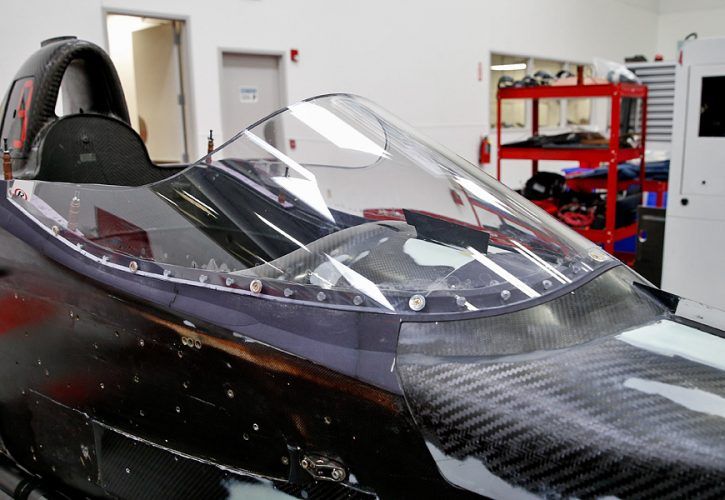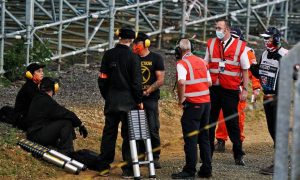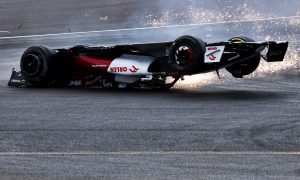
The IndyCar Series will test its solution to the issue of driver head protection this week. The trial will take place at ISM Raceway in Phoenix on Thursday afternoon during a scheduled pre-season rookie test.
Formula 1 is making its controversial Halo device mandatory for all cars taking part in the 2018 season. Formula E is also implementing a similar "halo" design that looks like a horizontal roll hoop supported by a post positioned ahead of the driver.
However, IndyCar technical experts believe that a windshield concept will prove to be a better idea. The design has been in development for two years, and has already been tested in Dallara's wind tunnel.
Current driver Gabby Chaves has spent additional time trying out the windshield in simulator rigs
“We have been striving to create a safety piece that aesthetically looks good and works in all conditions," said IndyCar president of competition and operations Jay Frye.
IndyCar races on variety of circuits, including ovals and street circuits. Making sure a solution works across all venues is a particular concern for the series.
"Any piece we put on an IndyCar must work for multiple types of venues and different lighting conditions. It has to be versatile," Frye explained. "This is a test of those things."
The windshield has been constructed using a PPG product called Opticor, also used to make canopies for fighter jets. It has the capability to deflect bird strikes at more than twice the top speed of an IndyCar.
The windshield will be fitted to a Honda-powered Chip Ganassi Racing car for this week's test. Four-time IndyCar champion Scott Dixon will be behind the wheel.
Formula 1 did previously look into a similar concept. Sebastian Vettel gave it a brief trial at Silverstone last July, but said it made him "a bit dizzy". The ides was quickly dropped in favour of the Halo.
The introduction of the Halo in F1 has been spurred on by the mortal injuries suffered by Jules Bianchi in Suzuka in 2014.
IndyCar's initiative has similarly been motivated by tragedy. Two-time Indy 500 champion Dan Wheldon succumbed to devasting head injuries after a crash in Las Vegas in 2011.
And Justin Wilson - himself a former F1 driver - died after being struck by flying debris during a race at Pocono Raceway in 2015.
His younger brother, Andretti Autosport Indy 500 driver Stefan Wilson, supports the moves to improve safety.
"I know it's been a heated debate on whether cockpit protection is needed," he said. "But I really think it's critical.
"It's important enough to push for this added safety," he insisted. "The approach IndyCar is taking is the best route so far."

© IndyCar Media
Gallery: The beautiful wives and girlfriends of F1 drivers
Keep up to date with all the F1 news via Facebook and Twitter






